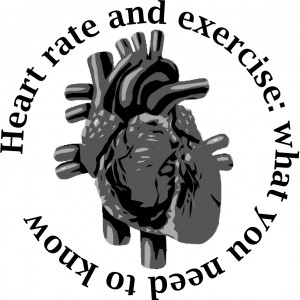Whether you’re hoping to see more results at the gym or looking to shake up your workout routine, the answer might be listening to your heart. Experts believe that monitoring your heart rate can allow you to customize your workouts and tailor them to fit your specific goals.
Landon Shroyer, a Gustavus alum and Health Fitness major who currently coaches a basketball team in Northfield, is invested in this process.
“One benefit of monitoring heart rate is that it gives people immediate feedback as to how hard they’re working, based on their maximum heart rate,” Shroyer said.
According to Shroyer, a person can roughly calculate their maximum heart rate with a simple equation.
“Your maximum heart rate can be calculated by subtracting your age from 220,” Shroyer said.
Conventional knowledge shows that the more intense a workout is, more calories and fat are burnt. This long-standing view, that many have been led to believe, is not completely true.
Gustavus graduate Chad Guentzel, owner of Anytime Fitness in St. Peter, trains between thirty and forty clients each week at his gym. Guentzel’s clients have a diverse set of goals, ranging from weight loss to muscle building and rehabilitation. He incorporates heart rate monitoring into all his sessions.
“[Training based on heart rate] all depends on what the client’s goals are. If you’re planning on running a marathon, you want to work at a higher intensity—around eighty percent of your maximum heart rate. This will strengthen your heart and lungs, and give you more endurance,” Guentzel said.
Conversely, people looking to lose weight and burn fat may have more success by training at a slightly lower intensity level.
“I tell my clients [who are trying to lose weight] to work out at around sixty percent of their maximum heart rate. This is where your body burns fat more efficiently, whereas at a higher heart rate, it relies more on carbohydrates,” Guentzel said.
Senior Health Fitness Major Olivia Johnson says she recommends interval training to improve cardiovascular endurance. Interval training involves alternating between higher and lower heart rate zones within a single workout.
 “One of the main benefits of interval training is that it can be a lot more efficient than traditional workouts. Fifteen minutes of interval training can actually be more effective than half an hour of running on the treadmill at a steady pace,” Johnson said.
“One of the main benefits of interval training is that it can be a lot more efficient than traditional workouts. Fifteen minutes of interval training can actually be more effective than half an hour of running on the treadmill at a steady pace,” Johnson said.
According to Johnson, a good interval-training workout strengthens your heart in a different way.
“When you’re alternating between high and low intensities during your workout, your heart has to adjust, which builds cardiovascular strength,” Johnson said.
Shroyer suggests that effective interval training centers around exercises that elevate your heart rate quickly.
“My favorite [interval exercises] are mountain climbers, squats, pull-ups, and sprints. Really anything that gets your heart rate up fast,” Shroyer said.
Heart rate monitors can cost hundreds of dollars, but Johnson suggests using a more traditional counting method to calculate your heart rate between sets in a workout.
“If you don’t have a heart rate monitor, you can calculate your heart rate (in beats per minute) by taking your pulse for six seconds, and multiplying the number of beats by ten,” Johnson said.
It is very important to monitor heart rate because we can easily achieve our goal by exercise. We can control the intensity of our exercise routine as well as It provides us feedback on our improvement. Thanks for sharing this post.
Yes we can control the intensity of our exercise routine.
Thank you
people looking to lose weight and burn fat may have more success by training at a slightly lower intensity level.
I always thought it was everyone’s goal to be at a healthy weight and be fit?
Age Target HR Zone 50-85% Average Maximum Heart Rate, 100%
20 years 100-170 beats per minute 200 beats per minute
30 years 95-162 beats per minute 190 beats per minute
35 years 93-157 beats per minute 185 beats per minute
40 years 90-153 beats per minute 180 beats per minute
45 years 88-149 beats per minute 175 beats per minute
50 years 85-145 beats per minute 170 beats per minute
55 years 83-140 beats per minute 165 beats per minute
60 years 80-136 beats per minute 160 beats per minute
65 years 78-132 beats per minute 155 beats per minute
70 years 75-128 beats per minute 150 beats per minute
Well today we are living in technologically biased world, and smartphones are the key role players with smashing impacts on personal life of every individual on earth, application is not a word now but a reality with which people are not dealing but are enjoying their life style, in the same way today we have more apps than reasons to download them, and guess what we have an app to check our heart beats too, so check those apps on google play if you have an android iPhone they are really helping out…
nice share.. We can control the intensity of our exercise routine